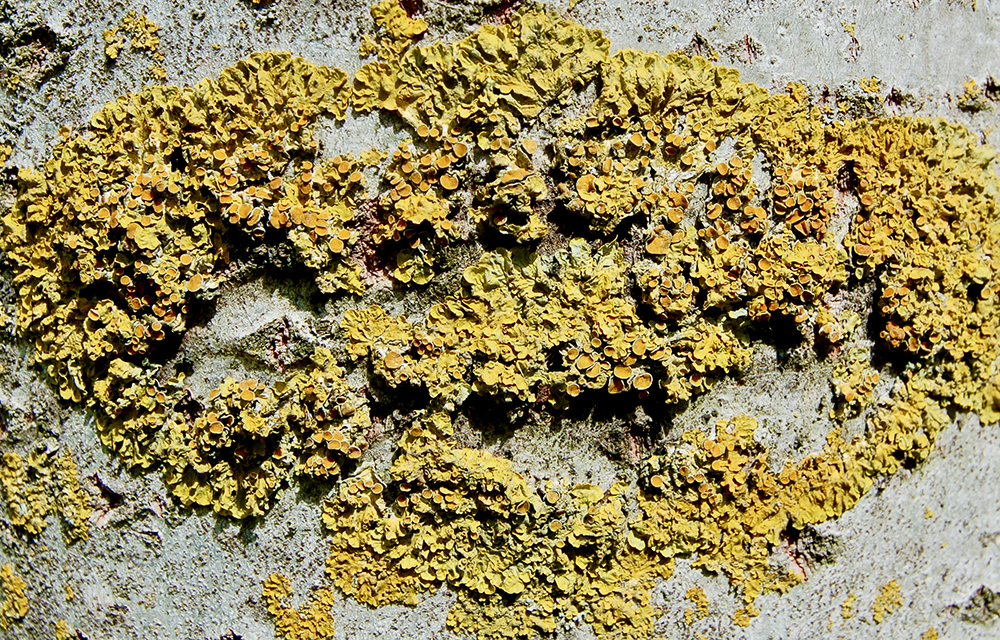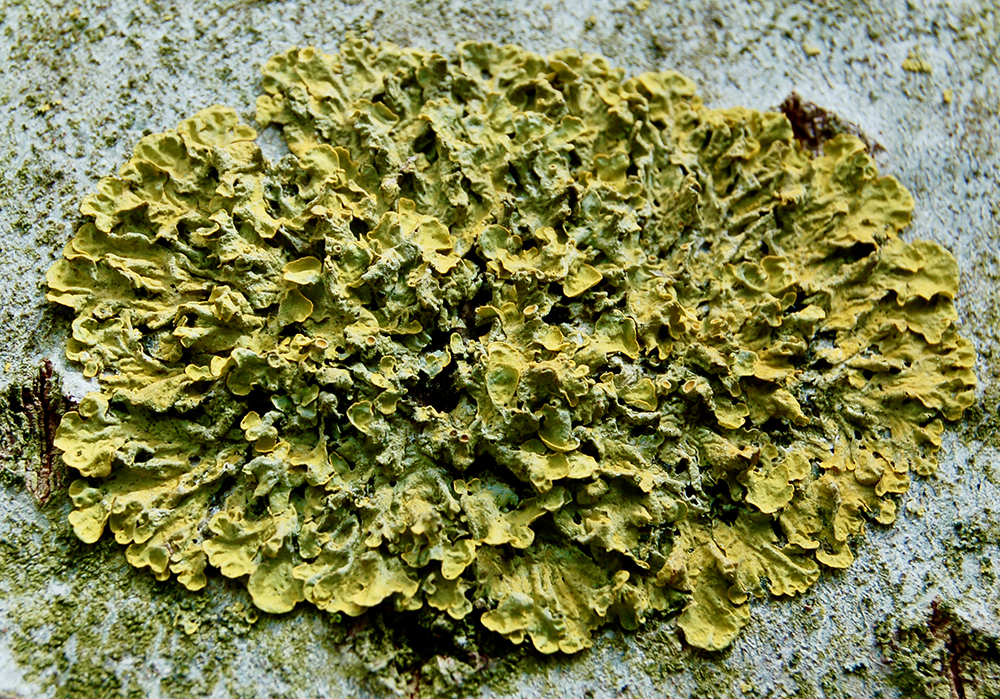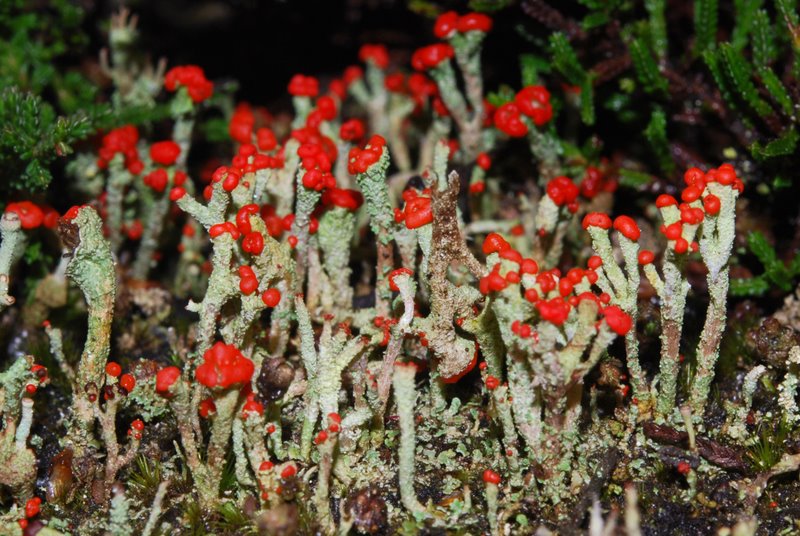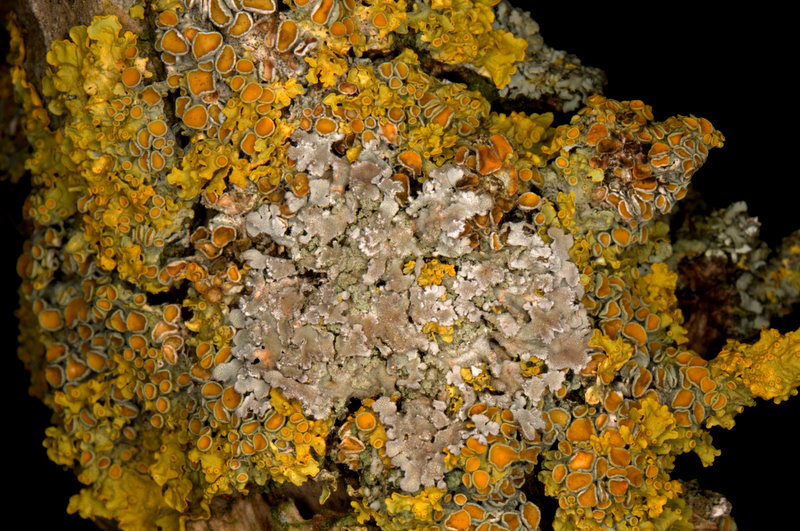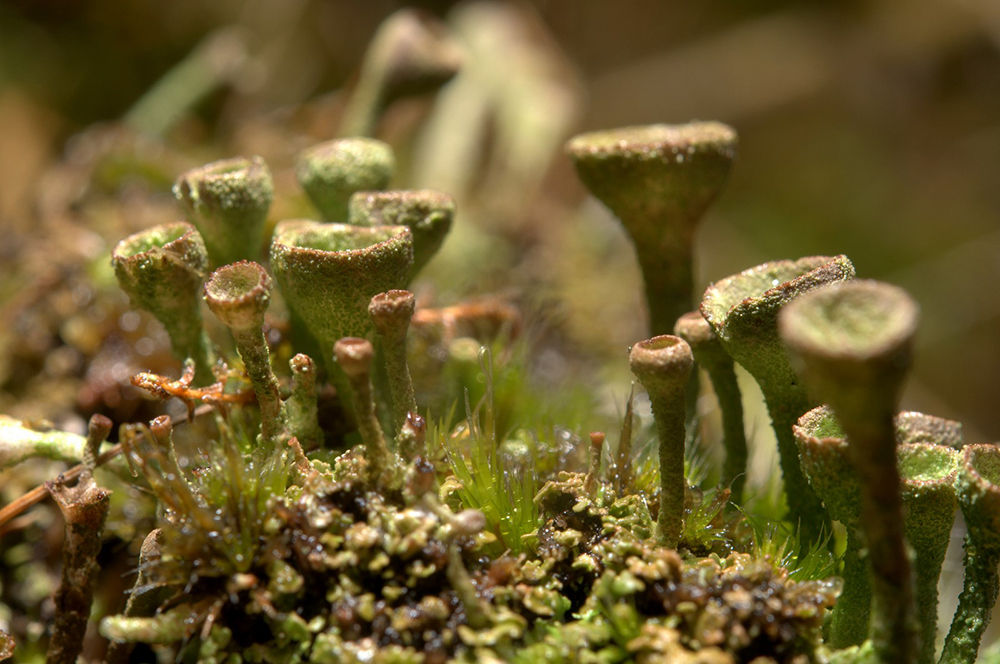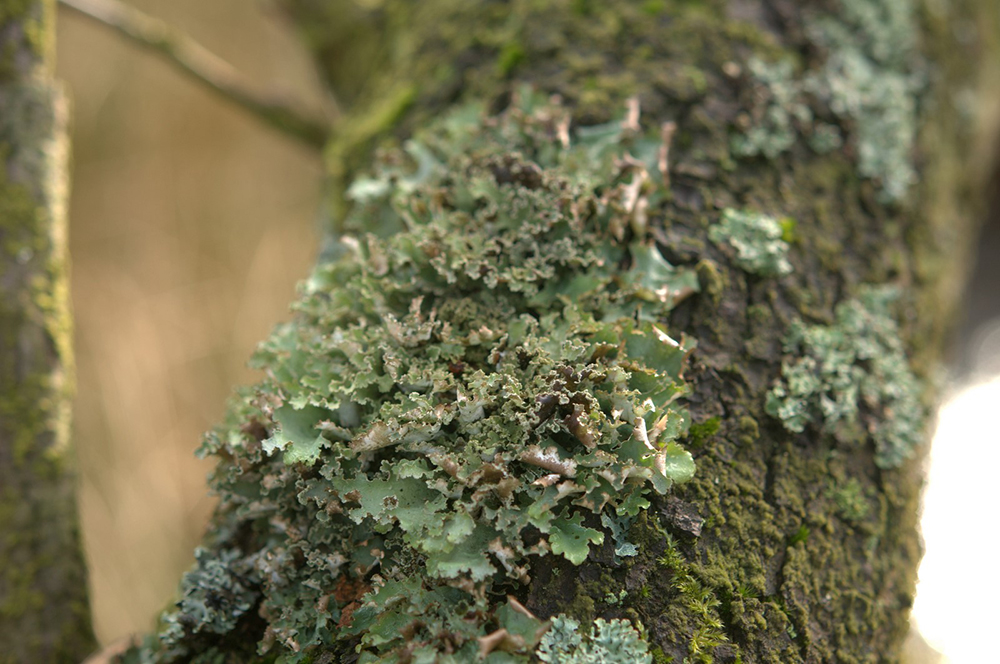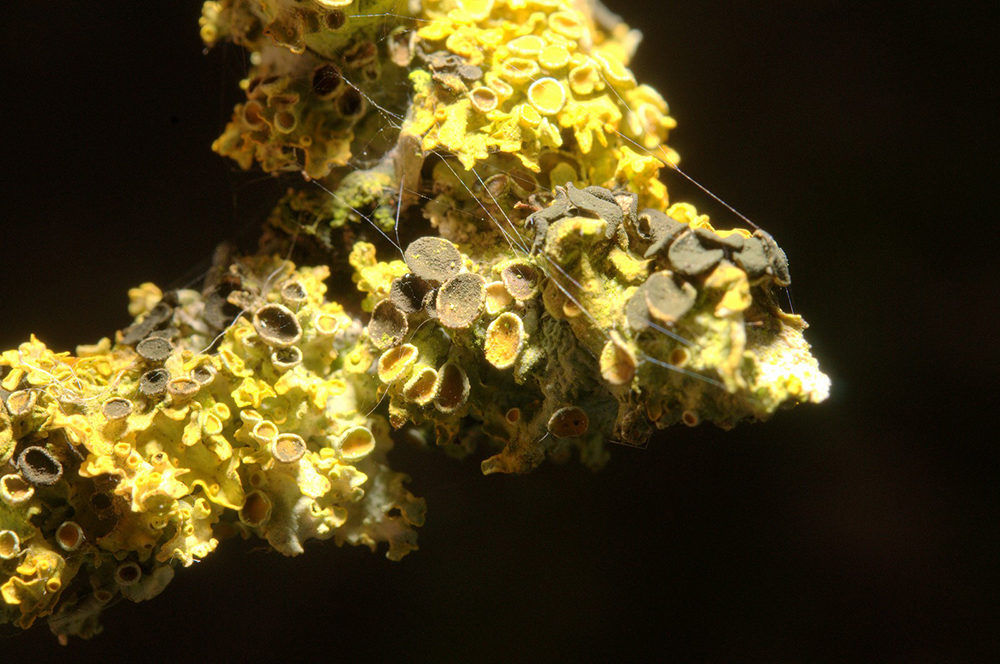From strong ochres to sage greens, in clusters of patterns from swirls and circles to cup formations and fronds, beautifully coloured lichens abound on tree trunks, gateposts, benches, fences, stone walls and on the ground. Look closely and you’ll find them – on most walks there will undoubtedly be a lichen lurking somewhere along the way.
Often more noticeable in autumn, when leaves have fallen and flowers are no longer in bloom, these cheery, steadfast natural patterns can appear in blazes of colour. Lichen is not a plant, nor is it a single organism, but a blend of fungi and algae. Worldwide there are thought to be upward of 17,000 different types, with more than a thousand in the UK.
These everyday formations are slow growing and have adapted to survive in some of the most extreme environments on Earth. They appear across arctic tundra, hot dry deserts and rocky coasts, and some are thousands of years old.

Photography by Caroline Fitton 
Photography by Caroline Fitton
Ecologically valuable
Lichens are links in an ecological chain – many invertebrates, including moths, depend on lichens for food and shelter. They are excellent at measuring air quality, which makes them of ecological value. They are also widely used as environmental indicators or bio-indicators. If the air is very badly polluted with sulphur dioxide, lichens may not be present at all. If the air is clean, shrubby, hairy and leafy lichens become abundant. A very few lichen species can tolerate higher levels of pollution – you can often find these on pavements, walls and tree bark in urban areas.
Where to find lichens
Churchyards are good places to spot them. Often the oldest man-made stone structures in the local landscape, many churches and their memorials have changed little over decades or centuries. This has provided the ecological continuity that slow-growing species need to become established. This antiquity, along with the diversity of stone types, often results in a remarkable diversity of lichen species. There are still many lichens in lowland churchyards which we don’t properly understand, and some of these are almost certainly undescribed species.
In lowland Britain, where there are few natural stone outcrops, churchyards are usually the most important sites for lichens that grow on stone. Generally, the oldest stones (church walls and old memorial stones) support the most notable lichens. Old, weathered, wooden structures, particularly those that have not been treated with preservatives, are an increasingly rare habitat in the landscape. Old gate posts, lychgates, wooden grave markers and bench seats are sometimes of great importance. Lichens also grow on mosses, pebbles, chippings, trees and on the ground, especially within curbed graves. Some churchyard lichens are rare, and a few are restricted to those locations.
Old buildings are also of importance for the interesting communities associated with metal-contaminated stonework. Copper compounds leaching from roofs and lightning conductors often stain stonework blue and stimulate specialist lichen communities. Old iron window grilles turn limestone windowsills rusty brown, permitting the creation of a variety of different types.

Photography by Brian Eversham 
Photography by Brian Eversham 
Photography by Brian Eversham 
Photography by Brian Eversham 
Photography by Brian Eversham
Common types
Here are just four of the most commonly spotted coloured lichens:
Golden lichen – a slightly stronger, deeper orange colour than painted double yellow lines, it fades to orange or lemon with elongated radiating lobes. It tends to grow in rounded encrustations, with a central area resembling crazy paving. You can find these everywhere on walls, exposed limestone and gravestones.
Cup lichen – has an irregular, overlapping, pale green, leaf-like thallus, forming dense mats from which trumpet-shaped fruiting bodies (30–40mm high) erupt. It is found growing on the ground and on tree roots and logs throughout the British Isles. One of the most commonly collected lichens.
Map lichen – has strong yellow to pale green encrusted rosettes, up to 15cm in diameter. It has a distinctive crackled appearance with small black spots scattered all over. An upland species, usually found on exposed hard granite and silica rock, it’s common in Scotland, Wales and the West Country, and more scattered in England and Ireland.
Leaf lichen – has large, folded, pale grey-brown, thin but broad leaf-shaped formations in large clusters. The undersides are ribbed with branching vein-like ridges, while the fruiting trumpets have grey stalks, tipped bright orange and red like damp matches. Found widespread across the British Isles, especially in the west and north.

Photography by Brian Eversham 
Photography by Brian Eversham 
Photography by Brian Eversham 
Photography by Brian Eversham 
Photography by Brian Eversham
To become a member of the Wildlife Trust in Cambridgeshire find out more here
WORDS Caroline Fitton
Coloured Lichens are prolific across the world and are ecologically extremely valuable. Find out which are the most common types and where you might spot them.
This article has been reproduced by courtesy of The Fens magazine. Click here to view more of their articles.
You may be interested in an article about Dormice – click here


